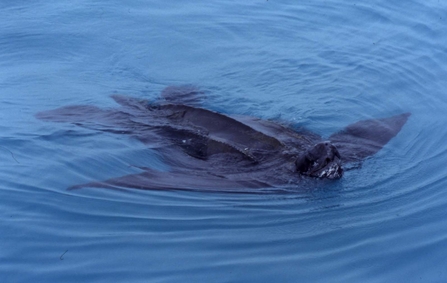Turtle are reptiles, which are often cold-blooded animals. They mainly enjoy warm waters, although they can be found in most oceans. Leatherback turtles are the only species of sea turtle to make regular visits to the UK.
Every summer and autumn, they may be found on the west coast. A sighting anywhere else is a very rare find! Leatherbacks are different from other sea turtles because they are actually warm blooded. This means they can visit cold UK waters to feed on the jellyfish here.






